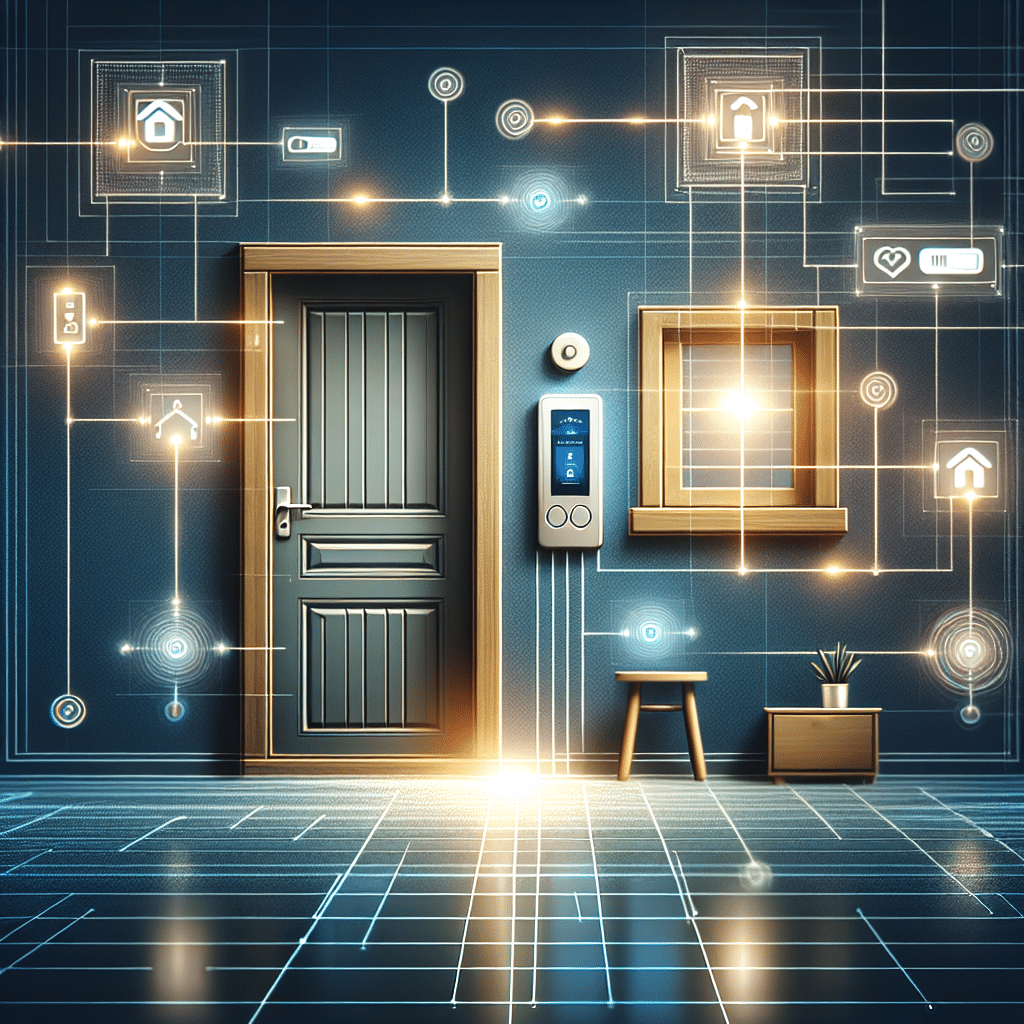Understanding Smart Sensors for Doors and Windows
What Are Smart Sensors?
Smart sensors are devices equipped with advanced technology that allows them to monitor and collect data regarding specific environments or conditions. In the context of doors and windows, these sensors can detect movement, changes in position, and environmental factors, providing a secure and efficient way to manage home security and energy usage.
Types of Smart Sensors
-
Contact Sensors: These are the most common smart sensors for doors and windows. Comprised of two parts—one attached to the door or window and the other to the frame—they create a circuit. When the door or window is opened, the circuit breaks, triggering an alert or action through a smartphone app or security system.
-
Motion Sensors: Motion sensors detect movement in a specific area. Using technologies such as infrared, ultrasonic, or microwave, they can notify homeowners of unusual activity near doors and windows.
-
Glass Break Sensors: Specially designed to respond to the sound of breaking glass, these sensors ensure that any attempted intrusion is promptly detected, further enhancing security.
-
Environmental Sensors: These detect changes in temperature, humidity, and air pressure. Installed near windows, they can help prevent mold growth and manage home heating or cooling systems by signaling when windows are open or closed.
Key Features
-
Real-time Alerts: Smart sensors offer instant notifications via smartphone apps, allowing homeowners to respond quickly to any security breaches.
-
Integration with Smart Home Systems: Many smart sensors can connect with other home automation devices, such as smart locks, security cameras, and alarm systems. This interconnectedness enhances the overall security of the home.
-
Remote Monitoring: Homeowners can check the status of their doors and windows from anywhere using mobile applications that are compatible with their smart sensors.
-
Automation Capabilities: Smart sensors can trigger automated actions. For instance, if a window is opened, the home security system might be set to turn off the alarm or adjust the thermostat.
Benefits of Using Smart Sensors
-
Enhanced Security: The primary advantage of installing smart sensors at your doors and windows is improved security. They provide constant monitoring and immediate alerts, significantly reducing the risk of theft or unauthorized entry.
-
Energy Efficiency: Environmental sensors can help save energy by detecting when windows are open during heating or cooling periods, prompting systems to adjust their operation accordingly.
-
Peace of Mind: Knowing you have a robust security system in place allows homeowners to feel more relaxed, whether they are at home or away.
-
Easy Installation: Many smart sensors are designed for easy DIY installation, requiring minimal tools and expertise, thus saving on professional installation costs.
The Role of Wi-Fi and Connectivity
Smart sensors rely heavily on Wi-Fi connectivity for their functionality. When connected to a home network, these sensors can communicate with other devices, upload data to cloud services, and send notifications to users. Some sensors also offer local storage options, ensuring that even without an internet connection, data remains accessible.
Considerations for Choosing Smart Sensors
-
Compatibility: Before purchasing, ensure the sensors are compatible with your existing smart home setup, including hubs or ecosystems such as Google Home, Amazon Alexa, or Apple HomeKit.
-
Battery Life: Opt for sensors with rechargeable or long-lasting batteries to ensure uninterrupted operation.
-
Range: Check the operational range of each sensor, ensuring they can reliably connect to your Wi-Fi network from their intended installation location.
-
Installation Method: Some sensors are adhesive (battery-operated), while others might require wiring. Consider your comfort level with installing wiring when selecting sensors.
-
Privacy and Security: Select sensors from reputable manufacturers that utilize strong encryption to protect against potential cyber threats. Ensure the device complies with data protection regulations.
Leading Brands and Products
-
Ring: Known for its security products, Ring offers a range of smart contact and motion sensors that seamlessly integrate with its alarm systems.
-
Nest: Nest provides smart sensors that work with its home security offerings and other Google Home devices, focusing on energy efficiency and automation.
-
August: With smart door sensors that can be integrated into door locks, August focuses on security and user convenience.
-
Samsung SmartThings: A versatile ecosystem that includes a variety of sensors compatible with numerous third-party devices, providing flexibility and functionality.
Future Trends in Smart Sensor Technology
-
AI and Machine Learning: Future iterations of smart sensors will likely integrate advanced AI algorithms to learn user behavior, allowing for more tailored notifications and actions.
-
Integration with IoT: As the Internet of Things (IoT) expands, expect smarter interactions between devices, enabling enhanced automation and predictive security measures.
-
Improved Energy Management: Environmental sensors will play a pivotal role in smart homes, monitoring indoor climates and integrating with HVAC systems to optimize energy use.
-
Enhanced User Experience: Advances in user interface design will simplify the management and customization of sensor settings, contributing to a more seamless user experience.
-
Sustainability Features: Newer models may incorporate sustainability features, such as using renewable energy sources or biodegradable materials in their construction.
By incorporating smart sensors for doors and windows into your home, you can significantly enhance your security and energy efficiency while enjoying the conveniences of modern technology. As the technology advances, these sensors will become an integral part of smart home ecosystems, providing both security and comfort for homeowners.
